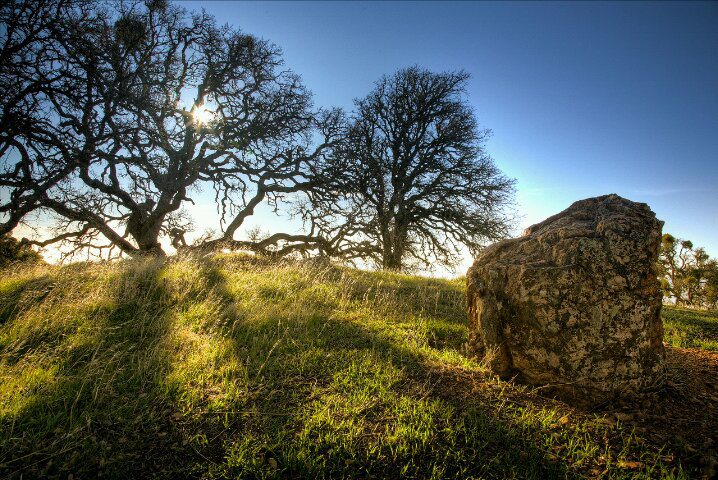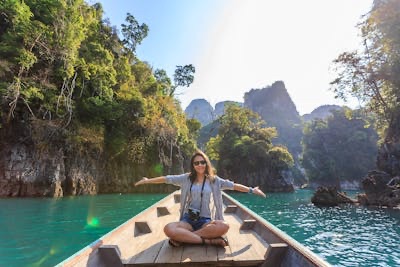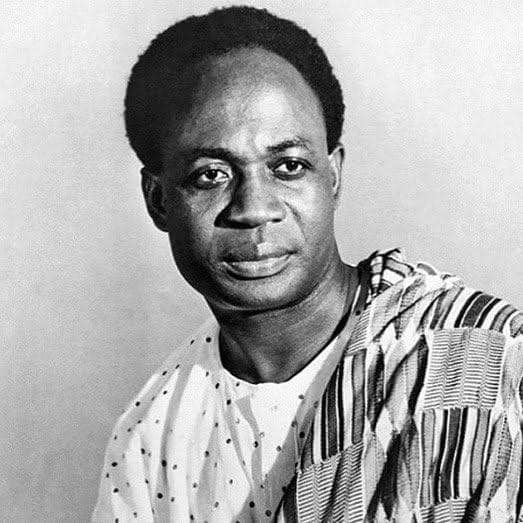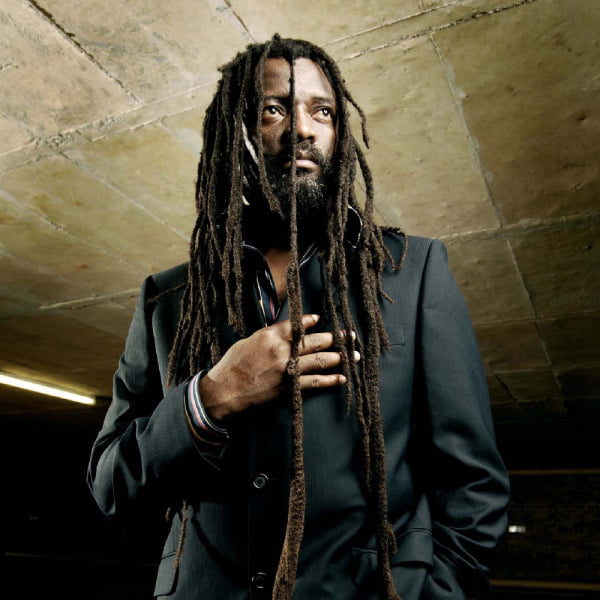
South Africa is a country located at the southernmost tip of the African continent. It is bordered by Namibia, Botswana, and Zimbabwe to the north, Mozambique, and Eswatini to the east, and Lesotho, a landlocked country, within its borders. The country has coastlines along the Indian Ocean to the east and the Atlantic Ocean to the west.
South Africa is known for its diverse landscapes, vibrant cities, and rich cultural heritage. Here are some popular tourist attractions in South Africa:
1. Table Mountain, Cape Town
Table Mountain is a prominent landmark and tourist attraction located in Cape Town, South Africa. It is a flat-topped mountain that overlooks the city and is one of the most iconic natural features in the region. Here’s some information about Table Mountain:
- Geographical Location: Table Mountain is situated in Table Mountain National Park, which is part of the Cape Floristic Region World Heritage Site. It is located in the southwestern part of South Africa, overlooking Cape Town.
- Physical Characteristics: The mountain gets its name from its flat and expansive plateau, resembling a table. It has a height of approximately 1,085 meters (3,558 feet) above sea level and is made up of sandstone. The plateau is around 3 kilometers (1.8 miles) from side to side.
- Biodiversity: Table Mountain is home to an incredible diversity of plant and animal species. The mountain and its surrounding areas boast a rich floral kingdom, with over 2,200 species of plants, including many endemic and rare species. The fynbos vegetation found on the mountain is particularly unique.
- Cableway: The Table Mountain Aerial Cableway is a popular mode of transportation for visitors. It offers a scenic ride to the top of the mountain, providing breathtaking panoramic views of Cape Town, the coastline, and the surrounding areas. The cable cars rotate 360 degrees during the ascent and descent, ensuring everyone gets a chance to enjoy the views.
- Hiking and Outdoor Activities: Table Mountain offers numerous hiking trails for outdoor enthusiasts. These trails range in difficulty, catering to both casual hikers and experienced climbers. Popular routes include Platteklip Gorge, India Venster, and Skeleton Gorge. It’s important to be prepared, as weather conditions can change quickly, and hikers should be cautious and carry necessary supplies.
- Fauna and Flora: The mountain is home to diverse wildlife, including dassies (rock hyraxes), mongooses, porcupines, snakes, and numerous bird species. The fynbos vegetation on Table Mountain supports a variety of plant species, including proteas, ericas, and reeds.
- Status as a Natural Wonder: In 2011, Table Mountain was declared one of the New7Wonders of Nature, a global poll that recognized the world’s most awe-inspiring natural sites. This acknowledgment has further enhanced the mountain’s reputation as a must-visit destination.
- Tourism and Visitor Facilities: Table Mountain attracts millions of visitors each year. Besides hiking and taking the cableway, visitors can enjoy picnicking, photography, rock climbing, and paragliding. The mountain has well-maintained visitor facilities, including restaurants, cafes, and souvenir shops at the cableway station.
- Diverse Cultural Significance: Table Mountain holds cultural and historical importance for the people of Cape Town. It is considered a sacred site by the indigenous Khoi-San people, and there are various myths and legends associated with the mountain.
- Conservation Efforts: Table Mountain is protected as part of Table Mountain National Park, which strives to preserve its natural beauty and biodiversity. The park management works to ensure sustainable tourism practices, control invasive species, and protect the unique flora and fauna.
When planning a visit to Table Mountain, it’s advisable to check weather conditions beforehand, as the mountain is sometimes covered in a cloud layer known as the “tablecloth,” which may obstruct views from the summit.
2. Robben Island, Cape Town
Robben Island is an island located in Table Bay, approximately 6.9 kilometers (4.3 miles) off the coast of Cape Town, South Africa. It has a rich history and is famous for being the site of a former political prison where many anti-apartheid activists, including Nelson Mandela, were held during the apartheid era.
Here are some key points of information about Robben Island:
- Historical Significance: Robben Island has a long history that dates back centuries. It was initially used as a place of banishment for various groups, including political prisoners, lepers, and mentally ill individuals. However, its most notable period was during the apartheid regime when it served as a maximum-security prison for political dissidents.
- Political Prison: From the mid-20th century until the early 1990s, Robben Island was used to imprison individuals who opposed the apartheid system. Prominent anti-apartheid activists, such as Nelson Mandela, Walter Sisulu, Govan Mbeki, and Ahmed Kathrada, were incarcerated on the island. They were subjected to harsh living conditions and endured years of confinement.
- Nelson Mandela’s Imprisonment: Nelson Mandela, South Africa’s first black president and a global symbol of the fight against apartheid, spent 18 of his 27 years in prison on Robben Island. During his incarceration, Mandela became a leading figure in the struggle against apartheid and emerged as a prominent leader upon his release in 1990.
- UNESCO World Heritage Site: In recognition of its historical and cultural significance, Robben Island was declared a UNESCO World Heritage Site in 1999. The designation highlights its role as a symbol of the triumph of the human spirit over adversity and its contribution to the freedom struggle in South Africa.
- Robben Island Museum: Today, Robben Island is a popular tourist attraction and is managed by the Robben Island Museum. Visitors can take guided tours of the island, which provide insights into its history and the experiences of the prisoners. The tours often include a visit to Nelson Mandela’s prison cell, the lime quarry where prisoners labored, and various historical buildings.
- Natural Environment: Apart from its historical significance, Robben Island also boasts a unique natural environment. The island is home to diverse bird species, including African penguins, as well as various plant species. It has been recognized as an important breeding ground for seabirds.
Visiting Robben Island provides an opportunity to learn about South Africa’s history, the struggle against apartheid, and the remarkable resilience of those who fought for freedom and equality.
3. The Garden Route
The Garden Route is a scenic stretch of coastline in the Western Cape Province of South Africa. It is located along the southern coast, running from Mossel Bay in the Western Cape to Storms River in the Eastern Cape. The route is known for its stunning natural landscapes, diverse vegetation, and numerous tourist attractions.
Here are some key features and information about the Garden Route:
- Natural Beauty: The Garden Route is famous for its breathtaking natural beauty, characterized by lush forests, pristine beaches, lakes, rivers, and mountains. It offers a diverse range of landscapes, including coastal cliffs, estuaries, and indigenous forests.
- Major Towns: The major towns along the Garden Route include Mossel Bay, George, Knysna, Plettenberg Bay, and Storms River. Each town has its own unique charm and attractions, offering a variety of accommodation options, restaurants, and outdoor activities.
- Outdoor Activities: The Garden Route is a paradise for outdoor enthusiasts. Visitors can enjoy a wide range of activities such as hiking, bird watching, whale watching (during the migration season), bungee jumping, canopy tours, surfing, kayaking, and golfing. The area is also home to several nature reserves and national parks, including Wilderness National Park, Tsitsikamma National Park, and Knysna Heads.
- Tsitsikamma Forest: The Tsitsikamma Forest is a highlight of the Garden Route. It is a dense and ancient indigenous forest that offers beautiful walking trails, suspension bridges, and opportunities to explore the unique flora and fauna of the region.
- Wildlife: The Garden Route is home to a diverse range of wildlife. In addition to the marine life found along the coast, visitors may encounter various animals such as monkeys, baboons, bushbuck, and even the occasional leopard or caracal in the forested areas.
- Cultural Heritage: The region is rich in cultural heritage. Visitors can explore historical sites, museums, and art galleries, as well as interact with local communities to learn about their traditions and way of life.
- Food and Wine: The Garden Route boasts a vibrant culinary scene, offering a wide variety of restaurants and cafes that showcase the region’s fresh produce and seafood. Wine lovers can also visit vineyards in the nearby Winelands region, known for its excellent wines.
- Accessibility: The Garden Route is easily accessible by car, with the N2 highway running through most of the route. It is approximately a 4-5 hour drive from Cape Town and a 6-7 hour drive from Port Elizabeth. There are also domestic airports in George and Port Elizabeth, providing convenient air access to the region.
The Garden Route is a popular destination for both local and international travelers due to its natural beauty, outdoor activities, and relaxed coastal atmosphere. It offers a perfect combination of adventure, relaxation, and exploration, making it a must-visit for anyone traveling to South Africa.
4. Victoria & Alfred Waterfront, Cape Town
The Victoria & Alfred (V&A) Waterfront is a popular tourist destination located in Cape Town, South Africa. It is a vibrant mixed-use complex that combines shopping, dining, entertainment, and leisure activities. Here’s some information about the Victoria & Alfred Waterfront:
- History: The V&A Waterfront was originally developed in the late 19th century as a harbor and dockyard. It was named after Queen Victoria and her son, Prince Alfred, who played a significant role in the establishment of the harbor.
- Location: The V&A Waterfront is situated at the foot of Table Mountain, overlooking the Atlantic Ocean. It is positioned in Cape Town’s central business district and enjoys a picturesque setting.
- Attractions: The waterfront offers a wide range of attractions for visitors of all ages. Some of the key highlights include:
- Shopping: The V&A Waterfront is home to over 450 retail outlets, including high-end fashion boutiques, craft markets, art galleries, and souvenir shops. Visitors can find both international brands and local designs.
- Dining: There are numerous restaurants, cafes, and eateries scattered throughout the area. Visitors can enjoy a variety of cuisines, ranging from local South African dishes to international flavors.
- Entertainment: The V&A Waterfront features several entertainment options, including cinemas, theaters, and live music venues. The Two Oceans Aquarium is also located here, showcasing a diverse range of marine life.
- Ferris Wheel: One of the iconic landmarks of the V&A Waterfront is the Cape Wheel, a giant Ferris wheel offering panoramic views of the city, Table Mountain, and the ocean.
- Historical Landmarks: The Clock Tower and the Chavonnes Battery Museum are historical sites within the V&A Waterfront. The Clock Tower, built-in 1882, is a red-brick tower that served as a harbor signal station.
- Activities: Visitors can engage in various activities at the V&A Waterfront, such as harbor cruises, boat tours to Robben Island (where Nelson Mandela was imprisoned), helicopter rides, and sunset cruises along the coast.
- Events and Festivals: The V&A Waterfront hosts a range of events and festivals throughout the year. These include music concerts, food and wine festivals, art exhibitions, and holiday celebrations.
- Sustainability: The V&A Waterfront is committed to sustainability and has implemented various initiatives to minimize its environmental impact. These include water and energy conservation programs, waste management, and green building practices.
- Accessibility: The V&A Waterfront is easily accessible by car, taxi, or public transportation. There are ample parking facilities, and the area is well-connected with bus and shuttle services. It is also within walking distance from many hotels in the city center.
The Victoria & Alfred Waterfront offers a unique blend of history, entertainment, shopping, and dining, making it a must-visit destination for both locals and tourists visiting Cape Town.
5. Blyde River Canyon Nature Reserve
The Blyde River Canyon Nature Reserve, also known as the Motlatse Canyon Nature Reserve, is a spectacular natural reserve located in Mpumalanga Province, South Africa. It is situated near the town of Graskop and forms part of the Drakensberg Mountain Range.
Here are some key details about the Blyde River Canyon Nature Reserve:
- Size and Geography: The nature reserve covers an area of approximately 29,000 hectares (71,660 acres). It encompasses the magnificent Blyde River Canyon, which is one of the largest canyons in the world and stretches for about 26 kilometers (16 miles) in length. The canyon is carved out by the Blyde River, and its towering cliffs reach heights of up to 800 meters (2,625 feet).
- Natural Attractions: The Blyde River Canyon Nature Reserve is renowned for its breathtaking natural scenery and geological features. Visitors can marvel at the panoramic views from various viewpoints along the canyon, such as the Three Rondavels, Pinnacle Rock, and God’s Window. The reserve also includes stunning waterfalls, including the popular Lisbon Falls, Berlin Falls, and Mac-Mac Falls.
- Flora and Fauna: The reserve boasts rich biodiversity, with diverse ecosystems ranging from montane grassland to indigenous forest. It is home to a wide variety of plant and animal species. The vegetation includes various types of trees, shrubs, and grasses, and the reserve is known for its unique flora, including rare species like the endangered cycad Encephalartos laurentianus. Wildlife in the reserve includes mammals like baboons, vervet monkeys, klipspringers, and bushbuck, as well as numerous bird species.
- Outdoor Activities: The Blyde River Canyon Nature Reserve offers several recreational activities for visitors. Hiking is a popular option, with numerous trails available that provide opportunities to explore the canyon, waterfalls, and surrounding areas. Boat trips are also available on the Blyde Dam, allowing visitors to experience the canyon from the water. Additionally, birdwatching, picnicking, and camping facilities are available within the reserve.
- Conservation and Cultural Significance: The Blyde River Canyon Nature Reserve is not only valued for its natural beauty but also for its cultural and historical importance. The reserve is part of the traditional lands of the Bapedi people, who have a deep connection to the area. Efforts are made to conserve the natural heritage of the reserve and promote sustainable tourism practices.
When visiting the Blyde River Canyon Nature Reserve, it is advisable to check the current operating hours, entry fees, and any specific regulations in place to ensure a safe and enjoyable experience.
READ ALSO: Discovercars : Easy Way to Rent a Car
6. Apartheid Museum, Johannesburg
The Apartheid Museum is a world-renowned museum located in Johannesburg, South Africa. It is dedicated to portraying the history, rise, and fall of apartheid, the system of racial segregation and discrimination that was enforced by the South African government from 1948 to 1994.
Here are some key points of information about the Apartheid Museum:
- History and Purpose: The museum was established in 2001 and is situated on the grounds of the Gold Reef City complex, which was once a major gold mine. The museum’s primary objective is to provide a comprehensive account of the apartheid era, documenting the political, social, and cultural aspects of the period.
- Exhibits: The museum offers a series of permanent and temporary exhibits that explore the history of apartheid through various multimedia displays, artifacts, photographs, and personal accounts. The exhibits aim to give visitors a deeply immersive and interactive experience.
- Structure and Design: The museum’s design is symbolic of the apartheid era. Visitors are initially divided into two entrances labeled “Whites” and “Non-Whites,” reflecting the segregated entrances of the past. As visitors progress through the museum, they encounter a range of exhibits that chronologically depict the apartheid regime and its effects on different aspects of South African society.
- Content and Themes: The museum covers a wide range of topics related to apartheid, including the rise of segregationist policies, the pass laws, forced removals, the Sharpeville Massacre, Nelson Mandela’s imprisonment, the struggle against apartheid, and the eventual transition to democracy. The exhibits also shed light on the contributions of individuals and organizations that fought against apartheid.
- Mandela Exhibition: One of the highlights of the museum is the Nelson Mandela Exhibition, which provides an in-depth exploration of the life and achievements of Nelson Mandela, South Africa’s first democratically elected president. The exhibition showcases Mandela’s personal items, photographs, and documents, providing insights into his role in dismantling apartheid.
- Education and Research: The Apartheid Museum serves as an educational institution, offering educational programs and resources for learners of all ages. It also houses a library and resource center that facilitates research on apartheid and related topics.
- Visitor Experience: The museum aims to evoke emotional responses from visitors by presenting the realities of apartheid. It encourages reflection, dialogue, and understanding of the past, with the goal of promoting reconciliation and human rights.
- Awards and Recognition: The Apartheid Museum has received international recognition for its contribution to promoting awareness and understanding of apartheid. It has been praised for its thought-provoking exhibits, educational initiatives, and its role in preserving the history of South Africa’s struggle for freedom.
Visiting the Apartheid Museum is a powerful experience that provides deep insights into South Africa’s turbulent past and the quest for equality and justice. It serves as a reminder of the importance of human rights, tolerance, and the ongoing struggle against discrimination.
7. Cape Winelands, Western Cape
The Cape Winelands is a renowned wine-producing region located in the Western Cape province of South Africa. It is known for its picturesque landscapes, historic towns, and world-class wineries. Here’s some information about the Cape Winelands:
- Location: The Cape Winelands is situated in the Western Cape province, just east of Cape Town, the provincial capital. It covers a vast area that includes several towns and wine-growing regions.
- Wine Production: The region is famous for its wine production and is considered one of the top wine regions in the world. It is particularly known for its production of high-quality wines, including Chenin Blanc, Shiraz, Pinotage, and Sauvignon Blanc. Wineries in the Cape Winelands often offer wine tastings, cellar tours, and stunning vineyard views.
- Stellenbosch: Stellenbosch is one of the major towns in the Cape Winelands and is known as the heart of the South African wine industry. It is a charming town with Cape Dutch architecture and oak-lined streets. Stellenbosch University, one of South Africa’s top universities, is also located here.
- Franschhoek: Franschhoek is another popular town in the Cape Winelands, often referred to as the “Food and Wine Capital” of South Africa. It has a rich French heritage and offers a wide range of wine estates, fine dining restaurants, and boutique hotels. The annual Franschhoek Wine Tram is a popular attraction, offering visitors a unique way to explore the vineyards.
- Paarl: Paarl is a historic town in the Cape Winelands known for its impressive granite mountains and vineyards. It is home to the iconic Paarl Rock, a large granite outcrop that offers panoramic views of the surrounding area. Paarl is also known for producing excellent wines and offers a variety of wine farms to visit.
- Wine Routes: The Cape Winelands is divided into several wine routes, each with its own unique charm and wine offerings. Some of the well-known wine routes include Stellenbosch Wine Route, Franschhoek Wine Route, Paarl Wine Route, Wellington Wine Route, and Constantia Wine Route. These routes provide visitors with the opportunity to explore different wineries, taste wines, and learn about the winemaking process.
- Culinary Delights: In addition to wine, the Cape Winelands also offers a vibrant culinary scene. Many wine estates have exceptional restaurants where visitors can indulge in gourmet meals paired with local wines. The region is known for its farm-to-table philosophy, with numerous farm stalls, markets, and artisanal food producers offering fresh and local produce.
- Natural Beauty: The Cape Winelands is known for its stunning natural beauty, with rolling vineyards, majestic mountains, and scenic landscapes. Visitors can enjoy activities such as hiking, horseback riding, and picnicking while taking in the picturesque surroundings.
Overall, the Cape Winelands is a must-visit destination for wine enthusiasts, nature lovers, and those seeking a taste of South Africa’s rich heritage and culinary delights.
8. Shaka Marine World, Durban
Shaka Marine World, also known as uShaka Marine World, is a popular tourist attraction located in Durban, South Africa. It is a marine theme park that offers a variety of entertainment, educational, and conservation experiences.
Here are some key points about Shaka Marine World:
- Location: Shaka Marine World is situated on Durban’s Golden Mile, a popular stretch of beachfront along the Indian Ocean.
- Attractions: The marine park is divided into several themed areas and offers a range of attractions:a. Sea World: This section of the park focuses on marine life conservation and education. It features various exhibits such as Dolphin Stadium, where visitors can watch dolphin shows, and the Seal Stadium, where trained seals perform. The aquarium showcases a diverse array of marine species, including sharks, penguins, turtles, and fish.b. Wet ‘n Wild: This water park within Shaka Marine World offers a variety of thrilling water rides and slides for visitors of all ages. It includes pools, slides, a lazy river, and a play area for younger children.
c. Village Walk: This area is designed as a shopping and dining precinct, offering a range of restaurants, cafes, and retail stores.
d. Dangerous Creatures: Here, visitors can encounter a variety of reptiles, insects, and other creatures, including snakes, spiders, and lizards.
e. Beaches: Shaka Marine World provides direct access to the beach, allowing visitors to enjoy the sand, sun, and sea.
- Activities and Shows: The park offers various activities and shows throughout the day, including dolphin shows, seal performances, and interactive educational experiences. Visitors can also engage in snorkeling, shark cage diving, and diving with dolphins (subject to availability and additional fees).
- Education and Conservation: Shaka Marine World places a strong emphasis on marine conservation and environmental education. It aims to raise awareness about the importance of preserving marine ecosystems and conducts research and conservation programs.
- Facilities: The park is well-equipped with amenities such as restaurants, snack bars, souvenir shops, restrooms, and picnic areas. It is designed to be accessible to visitors with disabilities, with ramps and designated facilities.
- Admission and Timings: Shaka Marine World operates on specific opening hours, which can vary depending on the season and day of the week. Admission fees apply, and there are different ticket options available for Sea World, Wet ‘n Wild, and combo packages.
Before planning a visit, it is recommended to check the official Shaka Marine World website or contact them directly for the most up-to-date information on attractions, timings, and ticket prices.
9. Cradle of Humankind, Gauteng
The Cradle of Humankind is a UNESCO World Heritage Site located in the Gauteng province of South Africa. It is situated about 50 kilometers northwest of Johannesburg and covers an area of approximately 47,000 hectares. The site is known for its exceptional paleoanthropological significance and contains a complex of limestone caves that have yielded numerous fossil remains, providing valuable insights into human evolution.
Here are some key points about the Cradle of Humankind:
- Fossil Discoveries: The Cradle of Humankind has been a treasure trove of fossil discoveries, with over 40% of the world’s known human ancestor fossils found in the area. Some of the most significant discoveries include the fossils of “Mrs. Ples” and “Little Foot,” which are believed to be around 2.3 and 3.67 million years old, respectively.
- Sterkfontein Caves: The Sterkfontein Caves, located within the Cradle of Humankind, are particularly famous for their fossil deposits. They have been excavated since the 1930s and have yielded numerous hominin remains. The most notable find from these caves is the fossilized skull of “Mrs. Ples,” an Australopithecus africanus specimen.
- Maropeng Visitor Centre: The Maropeng Visitor Centre serves as the main entrance to the Cradle of Humankind. It provides an interactive and informative experience about human evolution and the significance of the area’s fossil discoveries. The visitor center features exhibitions, displays, and multimedia presentations that showcase the history of life on Earth.
- Tumulus Building: The Tumulus Building is an architectural landmark at the Maropeng Visitor Centre. It is designed to resemble an ancient burial mound and houses an exhibition called “The Long March to Freedom,” which celebrates South Africa’s struggle for democracy.
- Activities and Exploration: Visitors to the Cradle of Humankind can participate in various activities, including guided tours of the Sterkfontein Caves, underground boat rides, and interactive exhibitions. The area also offers opportunities for hiking, hot air balloon rides, and exploring the scenic landscapes surrounding the fossil sites.
- UNESCO World Heritage Site: In 1999, the Cradle of Humankind was declared a UNESCO World Heritage Site in recognition of its exceptional universal value to humanity. The site’s fossil record provides crucial evidence for the understanding of human evolution, and it continues to be a site of ongoing research and discoveries.
The Cradle of Humankind is not only a significant scientific site but also a popular tourist destination. It offers a unique opportunity to explore the origins of humanity and gain insights into our evolutionary history.
10. Kruger National Park

Kruger National Park is one of the largest game reserves in Africa, located in northeastern South Africa. Here’s some information about Kruger National Park:
- Size and Location: Kruger National Park covers an area of approximately 19,485 square kilometers (7,523 square miles). It extends across the provinces of Mpumalanga and Limpopo in northeastern South Africa, sharing borders with Mozambique to the east and Zimbabwe to the north.
- History: The park was established in 1898 by Paul Kruger, the President of the former South African Republic, with the goal of protecting the wildlife of the region. It was initially named the Sabie Game Reserve and later renamed Kruger National Park in his honor.
- Biodiversity: Kruger National Park is renowned for its exceptional biodiversity. It is home to over 147 mammal species, including the “Big Five” (African elephant, lion, leopard, rhinoceros, and Cape buffalo), as well as an array of other wildlife such as giraffes, zebras, hippos, crocodiles, cheetahs, and various antelope species. The park also boasts over 500 bird species and numerous reptiles and amphibians.
- Vegetation: The park encompasses diverse ecosystems, ranging from open grasslands to dense mopane woodlands and riverine forests. The vegetation types found within the park support a rich array of wildlife and contribute to the park’s ecological diversity.
- Conservation and Management: Kruger National Park is managed by South African National Parks (SANParks) and plays a crucial role in conservation efforts in the region. It is involved in various initiatives to protect endangered species, combat poaching, and promote sustainable tourism.
- Tourist Activities: The park offers a range of activities for visitors to explore and experience its natural wonders. Game drives are a popular choice, allowing visitors to view wildlife in their natural habitat. Guided walks, wilderness trails, and bird watching are also available. Several rest camps and lodges provide accommodation options within the park.
- Accessibility: The park has numerous entrance gates and can be accessed by road from various towns in South Africa. The closest airports are Kruger Mpumalanga International Airport (KMIA) and Phalaborwa Airport, which offer domestic flights to and from major cities in South Africa.
- Best Time to Visit: Kruger National Park can be visited year-round, but the dry winter months (May to September) are generally considered the best for game viewing. During this time, vegetation is thinner, and animals congregate around water sources, making them easier to spot. However, the summer months (October to April) offer lush landscapes and an abundance of migratory bird species.
When planning a visit to Kruger National Park, it’s important to check the latest information and regulations from SANParks to ensure a safe and enjoyable experience.
These are just a few examples of the many amazing tourist attractions South Africa has to offer. The country is full of natural wonders, cultural experiences, and wildlife encounters that make it a fantastic destination for travelers.








